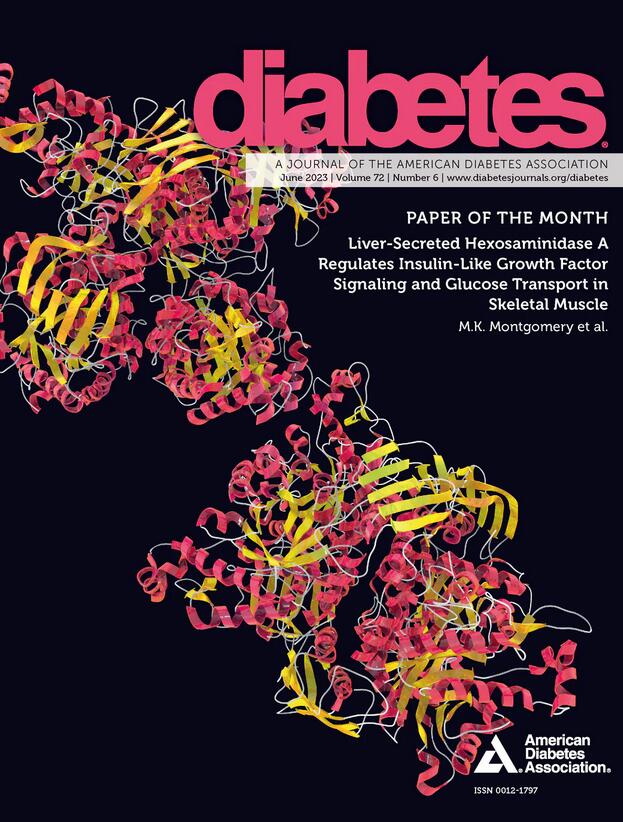1936-LB: 1 型糖尿病成人患者获取糖尿病技术用品的挑战
IF 6.2
1区 医学
Q1 ENDOCRINOLOGY & METABOLISM
引用次数: 0
摘要
背景:1 型糖尿病(T1D)患者在可靠获取处方技术用品(连续血糖监测仪 [CGM] / 胰岛素泵用品)方面面临障碍。目前尚不清楚每年供应中断 (ASAI) 的频率以及与此相关的负担(情感、经济、时间)。目标:量化 T1D 成人患者技术用品/胰岛素的 ASAI 和相关负担。方法:进行一项包含 64 个问题的在线调查:向美国成人 T1D 患者 T1D Exchange 登记处发放了一份包含 64 个问题的在线调查问卷。ASAI的定义是过去一年中个人用完CGM、胰岛素泵用品和/或胰岛素的总次数。获得供应品的负担按 1-10 级进行评估(10 = 非常同意)。报告均值和标度。参数数据采用 t 检验或方差分析,非参数数据采用 Mann-Whitney 检验或 Kruskal-Wallis 检验(显著 = p<0.05)。结果:2151 名受访者填写了问卷。平均年龄为 49 岁,73% 为女性,平均 A1C 为 6.7%,96% 和 80% 分别使用 CGM 和胰岛素泵。ASAI平均为1.8,并因性别(女性=1.9)、保险(医疗补助=3.9)、收入(无=3.23)、种族(黑人=3.0)和地区(农村=2.3)而有显著差异。女性、无保险、年收入较低和非白人种族的情绪负担(担心物资耗尽)明显较高。13%的受访者表示 "很难负担得起耗材",11%的受访者表示 "我在获取耗材上花费了太多的时间"。分别有 45% 和 48% 的受访者报告了 CGM 和胰岛素泵插管的早期故障。36% 的受访者表示,ASAI 的首要原因是 "需要事先授权"。避免 ASAI 的首要策略是 "致电供应公司要求额外供应"(25.9%)和 "使用供应时间超过建议时间"(25.5%)。结论:获取糖尿病用品方面的挑战是巨大的,对某些患有 T1D 的社会经济群体的影响尤为严重。披露 A.A. Welch:无。T. Knoerl:无。E.J. Kopras: 无:无。S. Corathers:无。M. Falciglia:无。本文章由计算机程序翻译,如有差异,请以英文原文为准。
1936-LB: The Challenge of Obtaining Diabetes Technology Supplies in Adults with Type 1 Diabetes
Background: Individuals with Type 1 Diabetes (T1D) face barriers to reliably obtain prescribed technology supplies (continuous glucose monitors [CGM]/insulin pump supplies). The frequency of annual supply access interruptions (ASAI) and the associated burden (emotional, financial, time) with this process are unclear. Objective: To quantify ASAI of technology supplies/insulin and associated burden in adults with T1D. Methods: A 64-question online survey was distributed to the T1D Exchange registry for US adults with T1D. ASAI was defined as total instances that individuals ran out of CGM, insulin pump supplies, and/or insulin in the past year. The burden to obtain supplies was assessed by a 1-10 scale (10 = strongly agree). Means and SD were reported. Significance of comparisons was assessed with t-tests or ANOVA for parametric data, and Mann-Whitney or Kruskal-Wallis tests for non-parametric data (significant = p<0.05). Results: Responses were completed by 2151 surveyed. Mean age was 49 years, 73% female, average A1C 6.7%, with 96% and 80% utilizing CGM and insulin pumps respectively. ASAI averaged 1.8 and varied significantly based on gender (Female = 1.9), insurance (Medicaid = 3.9), income (None = 3.23), race (Black = 3.0), and location (Rural = 2.3). Emotional burden (worry about running out of supplies) was significantly higher in women, those without insurance, lower annual income, and non-white race. A 10 was reported for “It is difficult to afford supplies” by 13% and “I spend too much time obtaining supplies” by 11%. Early CGM and insulin pump cannula failures were reported by 45% and 48% of respondents respectively. The top reason for ASAI was “Required prior authorization” in 36% of respondents. The top strategies to avoid ASAI were “Call supply company to request extra supplies” (25.9%), and “Use supply for longer than recommended” (25.5%). Conclusion: Challenges in obtaining diabetes supplies are significant and disproportionately affect certain socioeconomic groups with T1D. Disclosure A.A. Welch: None. T. Knoerl: None. E.J. Kopras: None. S. Corathers: None. M. Falciglia: None.
求助全文
通过发布文献求助,成功后即可免费获取论文全文。
去求助
来源期刊

Diabetes
医学-内分泌学与代谢
CiteScore
12.50
自引率
2.60%
发文量
1968
审稿时长
1 months
期刊介绍:
Diabetes is a scientific journal that publishes original research exploring the physiological and pathophysiological aspects of diabetes mellitus. We encourage submissions of manuscripts pertaining to laboratory, animal, or human research, covering a wide range of topics. Our primary focus is on investigative reports investigating various aspects such as the development and progression of diabetes, along with its associated complications. We also welcome studies delving into normal and pathological pancreatic islet function and intermediary metabolism, as well as exploring the mechanisms of drug and hormone action from a pharmacological perspective. Additionally, we encourage submissions that delve into the biochemical and molecular aspects of both normal and abnormal biological processes.
However, it is important to note that we do not publish studies relating to diabetes education or the application of accepted therapeutic and diagnostic approaches to patients with diabetes mellitus. Our aim is to provide a platform for research that contributes to advancing our understanding of the underlying mechanisms and processes of diabetes.
 求助内容:
求助内容: 应助结果提醒方式:
应助结果提醒方式:


